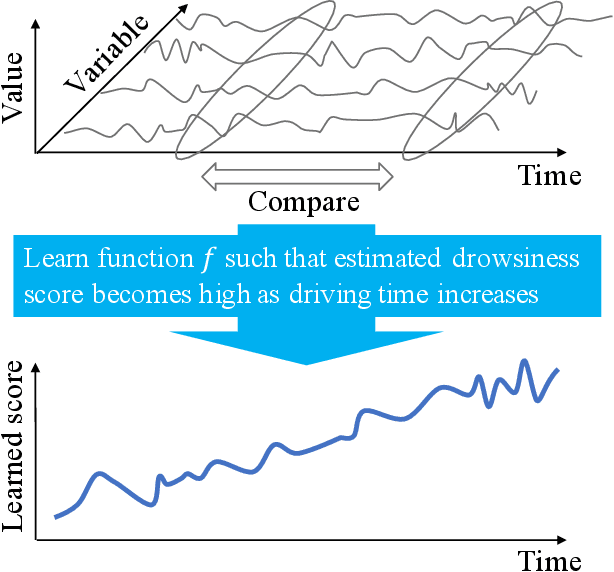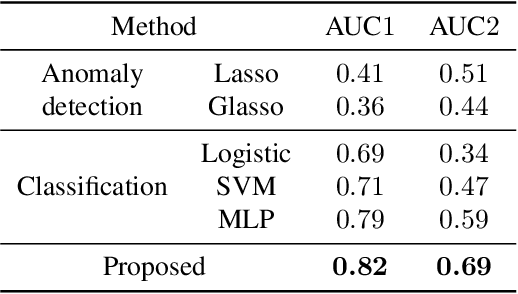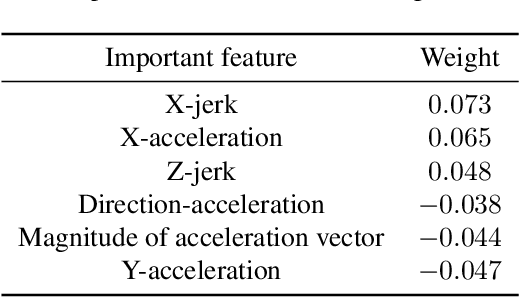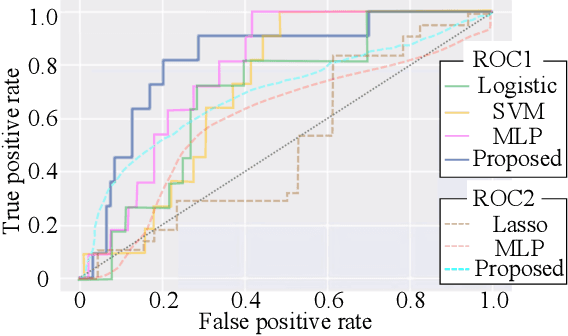Takayuki Yoshizumi
Learning to Estimate Driver Drowsiness from Car Acceleration Sensors using Weakly Labeled Data
May 12, 2020



Abstract:This paper addresses the learning task of estimating driver drowsiness from the signals of car acceleration sensors. Since even drivers themselves cannot perceive their own drowsiness in a timely manner unless they use burdensome invasive sensors, obtaining labeled training data for each timestamp is not a realistic goal. To deal with this difficulty, we formulate the task as a weakly supervised learning. We only need to add labels for each complete trip, not for every timestamp independently. By assuming that some aspects of driver drowsiness increase over time due to tiredness, we formulate an algorithm that can learn from such weakly labeled data. We derive a scalable stochastic optimization method as a way of implementing the algorithm. Numerical experiments on real driving datasets demonstrate the advantages of our algorithm against baseline methods.
Regularized Dynamic Boltzmann Machine with Delay Pruning for Unsupervised Learning of Temporal Sequences
Sep 22, 2016



Abstract:We introduce Delay Pruning, a simple yet powerful technique to regularize dynamic Boltzmann machines (DyBM). The recently introduced DyBM provides a particularly structured Boltzmann machine, as a generative model of a multi-dimensional time-series. This Boltzmann machine can have infinitely many layers of units but allows exact inference and learning based on its biologically motivated structure. DyBM uses the idea of conduction delays in the form of fixed length first-in first-out (FIFO) queues, with a neuron connected to another via this FIFO queue, and spikes from a pre-synaptic neuron travel along the queue to the post-synaptic neuron with a constant period of delay. Here, we present Delay Pruning as a mechanism to prune the lengths of the FIFO queues (making them zero) by setting some delay lengths to one with a fixed probability, and finally selecting the best performing model with fixed delays. The uniqueness of structure and a non-sampling based learning rule in DyBM, make the application of previously proposed regularization techniques like Dropout or DropConnect difficult, leading to poor generalization. First, we evaluate the performance of Delay Pruning to let DyBM learn a multidimensional temporal sequence generated by a Markov chain. Finally, we show the effectiveness of delay pruning in learning high dimensional sequences using the moving MNIST dataset, and compare it with Dropout and DropConnect methods.
 Add to Chrome
Add to Chrome Add to Firefox
Add to Firefox Add to Edge
Add to Edge